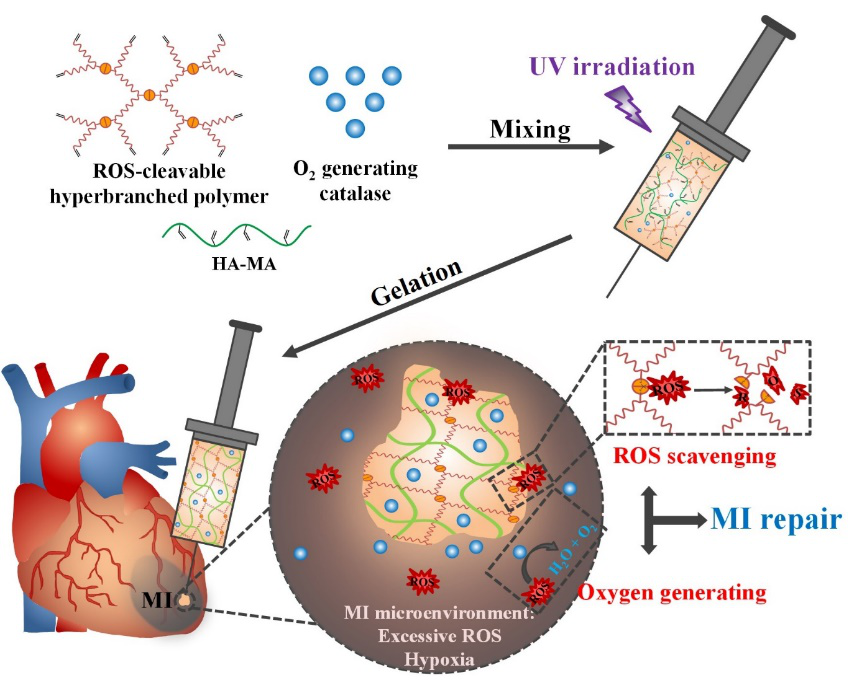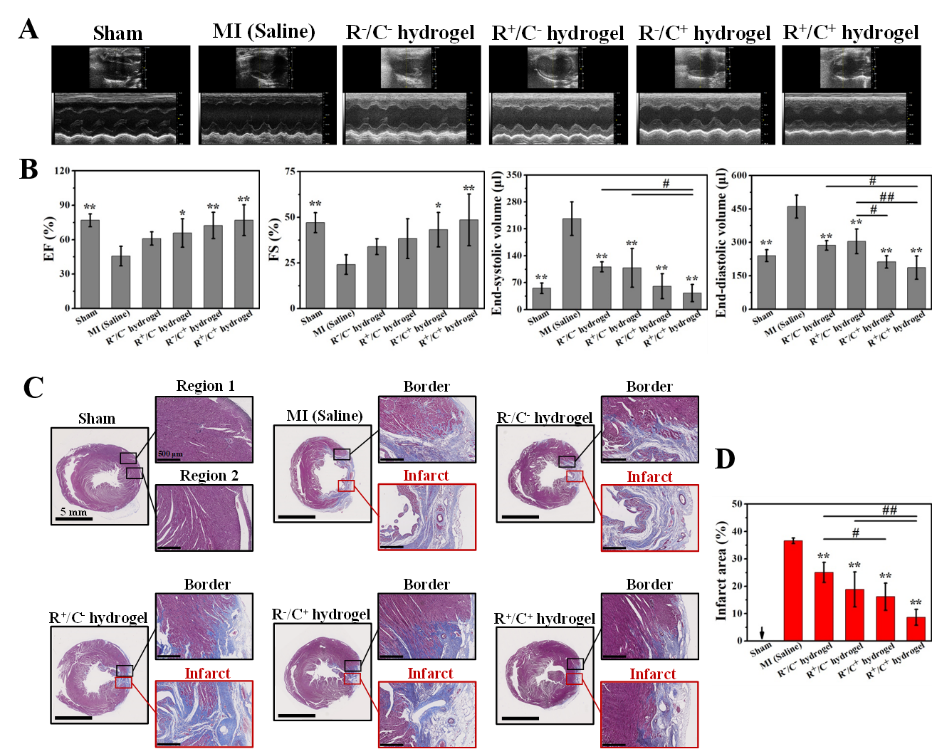
hotline:
17715390137
Tel/Wechat:
18101240246 (Technology)
0512-68565571
Email:mxenes@163.com (Sales Engineer)bkxc.bonnie@gmail.com
Scan the code to follow or search the official account on WeChat:
2D Materials Fronrier After paying attention,
click on the lower right corner to contact us,
Enter enterprise WeChat.
Professional Services Online

The over-expressed reactive oxygen species (ROS) and hypoxia in the tissue microenvironment can disrupt normal tissue repair and regeneration, and then promote fibrosis and dysfunction, which are important causes of inflammatory diseases such as myocardial infarction. Therefore, timely and effective elimination of excessive ROS in tissues and improvement of the hypoxic environment are of great significance for inhibiting the inflammatory microenvironment and promoting tissue repair and regeneration.
In response to this problem, the team of Professor Gao Changyou of Zhejiang University first synthesized a product through the Michael addition reaction between the double bond of polyethylene glycol diacrylate (Mn=575, PEGDA575) and the amino group of the small molecule of ketal thiol diamine. A new type of active oxygen-responsive hyperbranched polymer (HBPAK) with double bond end groups. Furthermore, HBPAK, methacrylic acid-modified hyaluronic acid (HA-MA), catalase (CAT) that can catalyze hydrogen peroxide into water and oxygen, and an aqueous solution of the photoinitiator LAP are thoroughly mixed, and under ultraviolet light It can be cross-linked in a few seconds to obtain a bifunctional hydrogel (Figure 1). The hydrogel has both the functions of eliminating active oxygen and releasing oxygen, which can specifically alleviate the excessive inflammation and hypoxia of the microenvironment of myocardial infarction, and effectively promote the repair and treatment of myocardial infarction tissue.

Figure 1 Construction of an injectable hydrogel capable of eliminating active oxygen and releasing oxygen and the principle of treatment of myocardial infarction
They prepared four different hydrogel materials (dual function, single function of active oxygen elimination or oxygen release, and non-functional control hydrogel) and injected them into the infarcted myocardium of myocardial infarction rats to investigate the body The therapeutic effect. The echocardiographic test and Masson staining results after 28 days (Figure 2) show that the four hydrogels can improve heart function and reduce the area of myocardial infarction to varying degrees, while the dual-function hydrogel can significantly increase the ejection fraction (EF) and short axis shortening rate (FS) values, improve systolic function, reduce left ventricular end systolic volume (ESV) and end diastolic volume (EDV) values, inhibit ventricular volume enlargement and ventricular remodeling, and reduce the area of myocardial infarction, Has the best myocardial infarction repair effect.
Further analysis showed that the bifunctional hydrogel can effectively reduce the content of free radicals in myocardial infarction tissue in situ, relieve hypoxia, reduce the content of inflammatory factor TNF-α in the serum of the body, inhibit cell apoptosis, and improve tissue repair type The ratio of M2/inflammatory M1 macrophages promotes vascularization. The bifunctional hydrogel has no cell loading components, is easy to prepare and operate, and has great application potential.

Figure 2 The results of ultrasonography and Masson staining in rats with myocardial infarction after 28 days
The research work "A Reactive Oxygen Species Scavenging and O2 Generating Injectable Hydrogel for Myocardial Infarction Treatment in vivo" was recently published in Small magazine. The first author of the paper is Ding Jie, a doctoral student in the Department of Polymer Science, Zhejiang University, and the corresponding author is Professor Gao Changyou, the Department of Polymer Science, Zhejiang University.

| Reminder: Beijing Beike New Material Technology Co., Ltd. supplies products only for scientific research, not for humans |
| All rights reserved © 2019 beijing beike new material Technology Co., Ltd 京ICP备16054715-2号 |